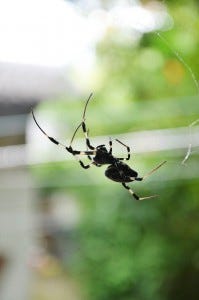
Bugs do several things really well, and their name captures what they do best: They bug us! Even worse, some species of bugs bite us, and bug bites are never fun. Half the time we don’t even realize we’ve been bitten until we start to feel itchy, and by then the culprit is long gone. However, you can often tell what type of insect bit you by inspecting the bite wound or welt that develops later on. Determining the insect that bit you can help you to eliminate it.
If you find that you're the victim of mosquitoes, no-see-ums or blackflies, Mosquito Magnet® offers CO2 biting insect traps that lure, trap and eliminate these frustrating bugs. First, however, you need to figure out which insect is responsible for the bite, so read on:
![Bed Bug Bites]() Bed Bug Bites
Bed Bug Bites
Bed bugs are infamous. They’re hard to spot and even harder to eradicate. If you’re traveling and develop a series of itchy, small red skin bumps, it could be a sign you’ve encountered these pesky critters. Often times, the bites will make a straight line, rather than appear haphazardly. You’ll notice these bumps within 1-3 days after you are bitten.
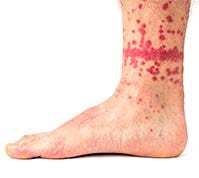 Flea Bites
Flea Bites
Fleas can live inside your home in carpets, furniture, drapery and pet beds. You may also find them in your yard. These insects will reproduce quickly if there is a suitable host. Bites appear as red, highly itchy bites, often in a line. Humans most commonly find flea bites on their lower legs, and a red, rash ring around your sock line is an immediate indicator of a flea problem. The waistline, armpits, breasts and groin are also primary target areas for fleas. The persistent itchy feeling caused by flea bites can lead to excessive scratching of the area, which can trigger a bacterial infection.
Horse-Fly Bites
Horse-flies, a general term for any biting fly from the tabanidae group of flies, are another problem biting insect. They aren't too choosy on the kind of animal they bite, so any single horse-fly may bite a horse one day, a rabbit the next and a human after that. They deliver a painful stinging bite that can spread diseases between animals and humans. Like mosquitoes, only the females bite animals as they collect blood to produce eggs from its protein. Bites are usually very painful to people and can lead to a raised area of skin, itching and, in severe cases, dizziness and wheezing. Wash the area thoroughly and avoid scratching the bite site.
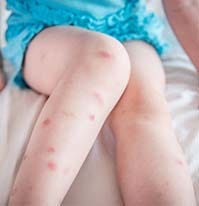 Mosquito Bites
Mosquito Bites
The typical reaction to a mosquito bite is an itchy red bump on your skin. Over time, the bite area may rise further and skin around the bite may exhibit a red splotchy pattern. If you’re in an area known to have mosquitoes and the temperature is above 50°F, a bite with this sort of pattern is most likely a mosquito bite. After you recognize a mosquito bite, you should treat it with any anti-itch medication that’s appropriate for you. Pay attention to possible secondary symptoms of diseases that mosquitoes can carry. Contact a physician if, after two weeks of the bite, you’re suffering a fever, chills, swollen glands, body aches, joint pains, a stiff neck or headaches. These could be indications of West Nile Virus, Dengue fever, Chikungunya, or other mosquito-borne illnesses that require specific treatments as quickly as possible. In many cases, treatment can prevent potential long-term damage that may be caused by encephalitis swelling of the brain or nervous system disorders.
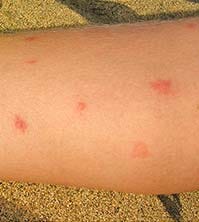 No-See-Um Bites
No-See-Um Bites
No-see-ums, also known as gnats, buffalo gnats, biting midges or sand gnats, are hard to spot because they’re so small. They’re much smaller than mosquitoes, but their bite is just as bad, if not worse. Where there’s one no-see-um, there’s usually a swarm. A typical bite pattern isn’t just one bite, but a whole series of bites that look like a raised rash. Each welt can grow up to an inch or more. If it’s May or June and you're experiencing warm weather, make a plan to keep no-see-ums away from yourself and your yard.
Spider Bites
Spider bites aren’t usually harmful. Non-venomous spider bites often look like a red circumscribed circle and often hurt less than a bee sting. A venomous spider bite, however, is extremely dangerous. In the U.S., the most common poisonous spiders are the black widow and the brown recluse. The brown recluse bite can quickly progress to skin erosion after looking like a bruise or blood blister. A black widow bite looks like two fang marks and feels like a pin prick initially, but begins to swell and hurt as the hours go by. Nausea, weakness, sweating and headaches often accompany venomous spider bites. If you think a venomous spider has bitten you, it’s important to seek medical treatment immediately. You may also find that you have an allergic reaction to the bite, with heart palpitations, rapid heartbeat, tightness in your chest, and other symptoms. If this happens, your best course of action is to seek a doctor’s treatment immediately.
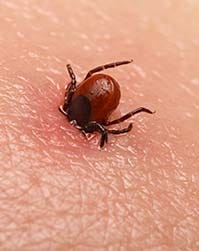 Tick Bites
Tick Bites
Tick bites might go unnoticed, but once one clamps itself to you, it can be difficult to get it off. If the bite area develops a bull’s eye pattern, which can arise even a month later, ask a doctor to test you for Lyme disease. Another possible consequence of tick bites is Rocky Mountain spotted fever, which gives you a fever, headache, and a rash that starts on your wrists and ankles. Unfortunately, tick bites rarely hurt or cause any immediate symptoms, so it's important to check for ticks after spending time outdoors.
More Information on Biting Insect Traps
At Mosquito Magnet®, we specialize in products that trap and kill mosquitoes and other biting insects. For more information on Mosquito Magnet® CO2 mosquito traps, call us at 800-953-5737 or join Mosquito Magnet® on Facebook for regular updates about biting insects and their control efforts.

